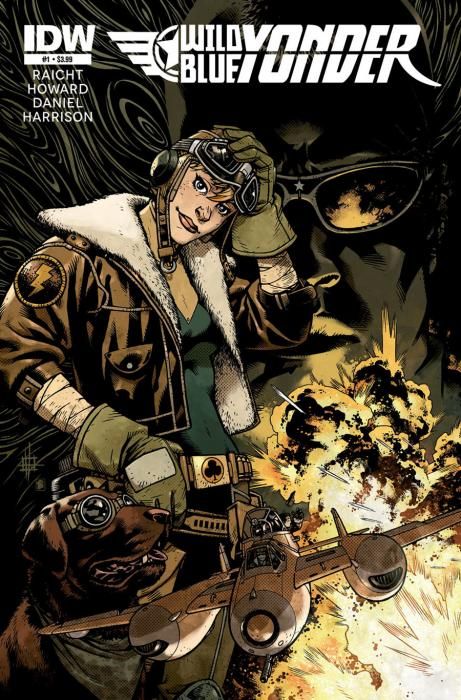In "Wild Blue Yonder" #1, writer-artist teammates Mike Raicht, Zach Howard, and Austin Harrison swing right into action for the debut of IDW Publishing's new creator-owned miniseries. They waste no time getting into the thick of the action, providing easy-to-swallow doses of exposition along with the way through small character moments and dialogue. With a story that combines elements of Joss Whedon's "Firefly" and Suzanne Collins' "The Hunger Games," this issue provides a solid foundation for a promising arc.
When working with such a dramatic leap into the future, many creators fall into one of the pitfalls of dystopian writing: over-explanation. Not so here. Raicht, Howard and Harrison succinctly establish a history for their world in as little as 2 pages of exposition. From then on, additional information is provided through natural, easy-flowing dialogue. In fact, their world-building excels through these little hints mentioned by the main characters, in that the words never feel obligatory, excessive or forced. The writers trust the audience enough that they don't hand-hold the reader through the experience, which makes for a stronger, more enjoyable issue.
The writers do, however, provide a vehicle for an introduction to this world through the character of Tug. Tug -- supposedly a miners' son, now working in what seems to be the last bar on Earth -- gets his chance to move upward when he's offered a gunner job onboard an airship by Cola, a young female pilot. Additionally, through Tug's eyes, readers quickly get acquainted to life in the air, especially when they encounter a firefight on their way back. Tug's introduction and fast adaptation to his gunner job efficiently shows how violent this world has become and strengthens both his and Cola's characterizations. Cola's world-weariness becomes fleshed out against Tug's naivety; her character develops easily, from cocky master pilot to hardened warrior to rebellious daughter, all within a short space of time. By the end of this issue, Raicht, Harrison and Howard masterfully create fresh, well-rounded characters that easily work with and against each other.
So far as the art is concerned, Howard excels at close-ups. The facial expressions are clear; body language is relatable and easy to read. However, when the focus pulls back, the panels start to get choppy and crowded. It becomes hard to tell what's happening, a fact not aided by the heavy, dark shading. Though colorist Nelson Daniel's muted tones are very appropriate to the story's bleak mood and work in most cases, they can sometimes be too dark, so much so that they hinder the storytelling. Aside from that, the issue is beautifully laid out. The action from panel-to-panel moves fluidly, at times feeling more like a movie than a collection of pictures.
"Wild Blue Yonder" #1 puts a fresh spin on the dystopian narrative that's become so ubiquitous in popular culture. The creative team presents strong characters and relationships that feel real, including a glimpse of a larger-than-life yet multifaceted villain. The story is action-packed and fast; the exposition, developed but not overbearing. Needless to say, I'll definitely be picking up "Wild Blue Yonder" next month.

